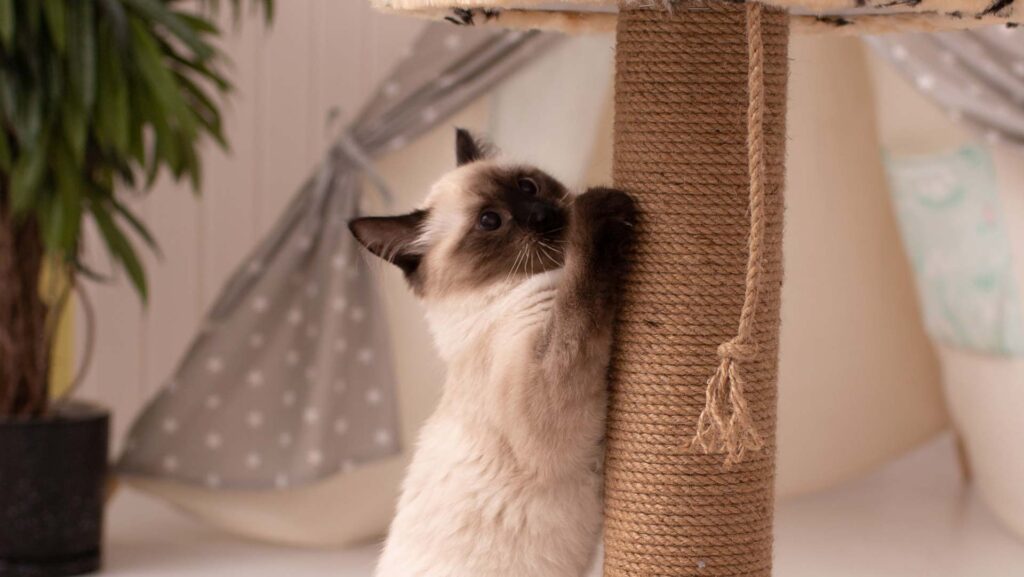
Homestead Veterinary Care no longer performs cat declawing. Why? Learn the reasons behind this decision below.
In the fall of 2018, Dr. French opened up a “Cat House” for cats that could not live in a home happily. At one point, she realized that the majority of the cats in the cat house were there for behavioral litter box issues. And that they were all front declawed. This struck her; although she had scaled back declawing to a bare minimum for years, she felt now she needed to put a complete halt to it. It was at the same time that the AVMA (American Veterinary Medical Association) came out with a policy against declawing. These two things together helped Dr. French decide to put this policy in place.
Facts about declawing cats:
- As many as 22 countries, as well as several states in the US have banned declawing cats
- Declawing cats removes the nail and ALSO the bone up to the last knuckle, similar to removing the last bone of your finger or a portion of your toe
- Declawed cats need to relearn how to walk. Imagine losing the first portion of all your toes and imagine relearning how to walk and balance. That is what a cat has to do after declawing.
Why do people consider declawing their cat?
- To prevent destructive behavior such as clawing up furniture or carpeting
- To prevent injury from the cat if they are fighting with other animals or have behavior issues and scratch humans
But why do cats NEED their claws?
- They are for defense. Any cat that does not have claws should never be allowed outside as they have no ability to protect themselves.
- For climbing and playing. Cats use their claws to climb up cat furniture, toys and more, as well as to grab toys to play
- Claws are a primary part of cat anatomy. Cats are “Digitigrades”, which means they walk on their toes. After declawing, a vital part of their anatomy has been amputated and they need to relearn how to walk.
What can a cat owner do instead of declawing?
- Encourage your cat to use appropriate surfaces such as scratching posts or special cat furniture. Some cats prefer wood, others like carpet or sisal. Try adding catnip to attract your cat.
- Place the post in front of the item your cat has wanted to scratch
- If your cat is trying to scratch the carpet, gently move them away and encourage scratching on the post instead. There are also flat scratching toys for cats available!
- Trim your cat’s nails every 1-2 weeks (begin getting them accustomed to this as a kitten if you can, using treats to praise calm behavior when nail trimming)
- Try nail caps! These are relatively easy to apply and last for 4-6 weeks or more and prevent the cat from scratching up furniture
- Apply sticky tape to areas your cat wants to scratch to discourage them
- Try pheromone sprays such as Feliway
Positive training and providing alternative scratch areas is key with cats. Negative reinforcement with cats often creates further destructive behavior. Encourage them with praise and treats and you should have no trouble.
We value all pets as well as their owners, so please feel free to discuss options with any of the staff at (715) 365-7387. We will be happy to help.

